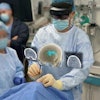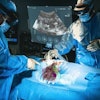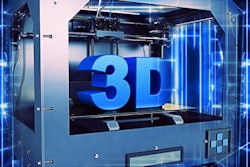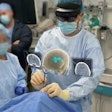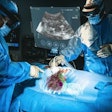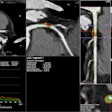Wednesday, November 28 | 12:15 p.m.-12:45 p.m. | IN224-SD-WEA5 | Lakeside, IN Community, Station 5
U.S. researchers explore the feasibility and potential benefits of simulating cortical mastoidectomy with 3D-printed models of a skull bone in this poster presentation.Cortical mastoidectomy is a surgery that involves opening the mastoid process at the base of the skull and then extracting infected cells from the inner ear. Despite it being a complex procedure, trainees have limited opportunities to practice this and similar procedures in the lateral skull base, presenter Dr. Elias Kikano from University Hospitals in Cleveland told AuntMinnie.com.
To expand training options for these types of procedures, Kikano and colleagues created 3D-printed models of the temporal bone based on CT scans of the skull. They constructed six distinct models using a different type of material for each and with four different types of 3D printers. The materials ranged from standard white resins to newer ones such as yellow photopolymer.
One surgeon performed a cortical mastoidectomy on all six of the 3D-printed models and reported that the models allowed for a realistic recreation of the actual experience. The surgeon noted varying degrees of correlation with real temporal bone anatomy among the six types of 3D printing materials but considered the majority of the models suitable for simulation.
Clinicians can use 3D-printed anatomical models made from a variety of materials for cortical mastoidectomy simulation and microdissection training, Kikano said.
The group is currently investigating the extent to which simulating mastoidectomy procedures on 3D-printed models may improve patient outcomes.
